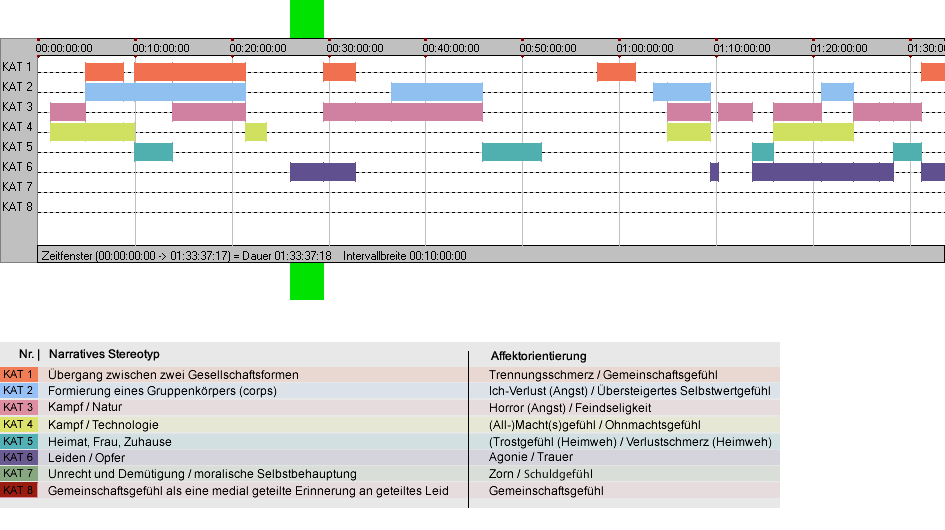First victim and a spring run dry*
Classification in categories
- Transition between two social systems
- Battle and nature
- Suffering / victim / sacrifice
Please enable JavaScript in Your browser.


Metadata
Movie: Sahara*
Number: 09
Individual analysis: Sahara*
Timecode start: 00:29:28:01
Timecode end: 00:32:42:08
Year of origin: 1943
scene analysis: MG
This scene stages a link between the improvised formation of the “curious detachment,” which gathers around centers (the dying man, the well) for the first time in this scene and the manifestation—only intimated—of the inhospitableness of the desert. Three units portray—always via the figure of the wounded comrade—images of constant, arduous movement (> EMU 1), the desolate situation (> EMU 2) and finally mutual interruptions of mourning, anger and following orders Number: 09
Individual analysis: Sahara*
Timecode start: 00:29:28:01
Timecode end: 00:32:42:08
Year of origin: 1943
scene analysis: MG
The level of sound design is dominant. It divides these three units and structures them by
- creating an image of compressed length at the beginning as the increasing intensity of a mechanical, constant musical rhythm, in interplay with the series of shots (> EMU 1);
- crystallizing a moment of grasping the situation in a series of fanfares and a dramatic change in the music and the shot composition (> EMU 2);
- and finally forming an interlocked sequence of passivity and activity as regards individuals and the group – whereby one interrupts the other – through the alternation of music and vocal appeals together with the character choreography.
This creates a composition which first juxtaposes movement and standstill and then combines them in an image of alternating mourning and wrath which in turn are resolved in the short moment of the final gesture, throwing the spade into the sand, an accent which interrupts this image. MG
Expressive movement units
01 01 03Materials about the scene
Position of the scene in the film





